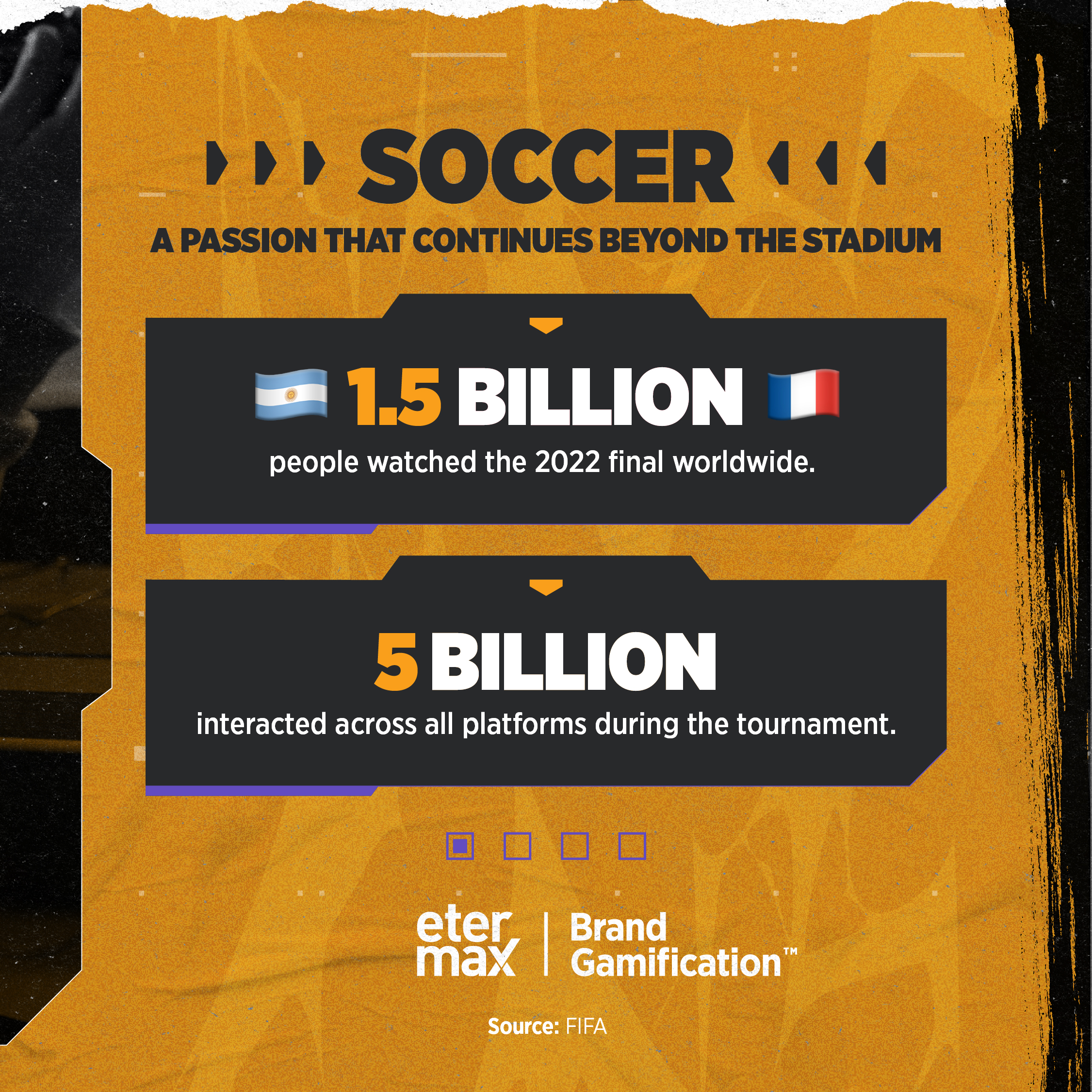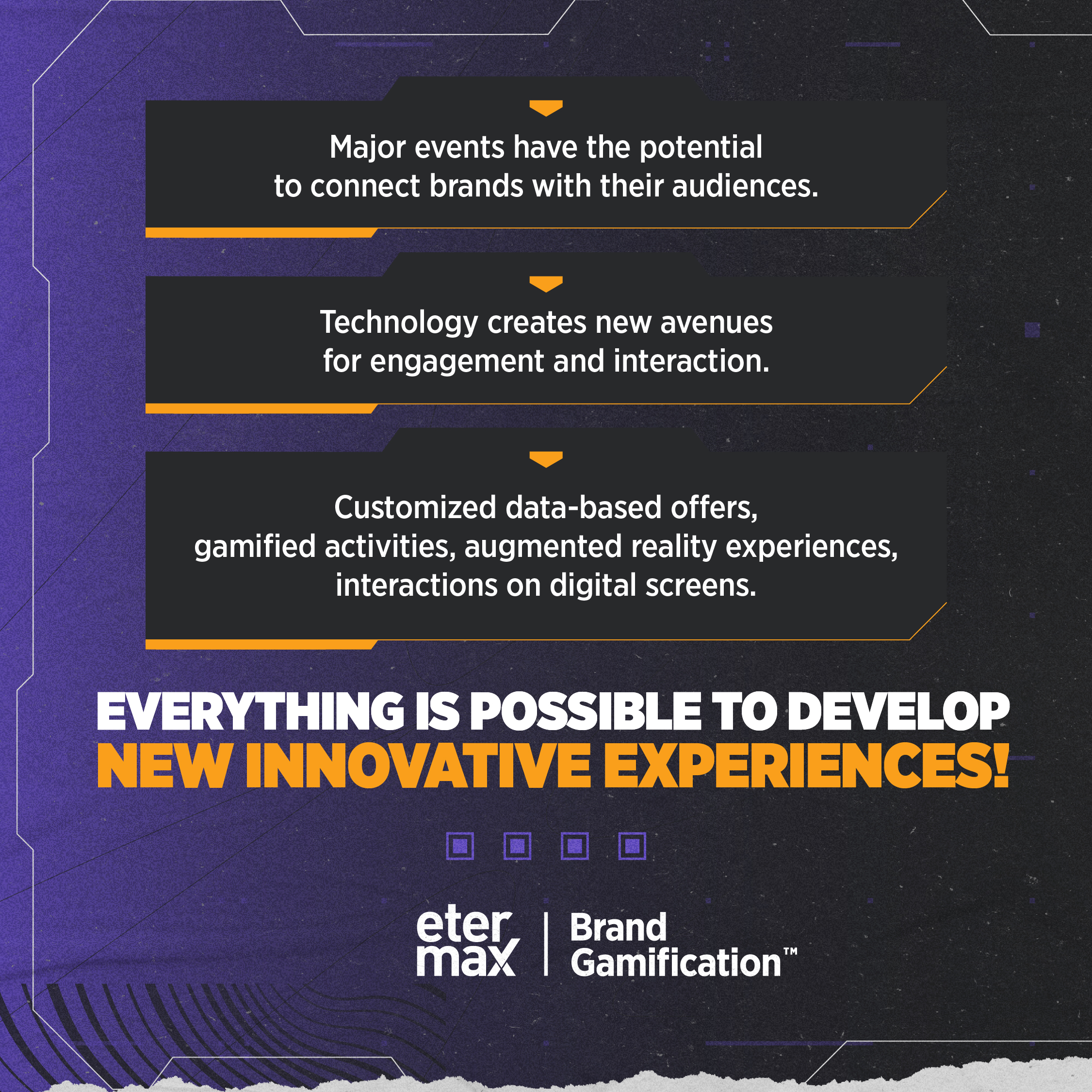In an era where digital innovation is at the forefront, major sports events have become a playground for brands to foster deeper connections with their audience. The passion for soccer presents an opportunity for companies looking to incorporate gamification and engage the spectators. The potential reach is so vast that, according to FIFA’s reports, there were 5 billion interactions across all platforms and devices during Qatar’s 2022 cup. Something similar happens with many other sports: the average audience for the last football final in the USA was 123,4 million, only surpassed by the 1969 Apollo 11 moon landing broadcast!
Imagine a stadium where every seat offers not just a view, but an interactive journey, where fans are not just spectators but active participants. This is the new reality of engagement, where gamification and digital out-of-home (DOOH) advertising converge to transform the way brands communicate with their audience during matches. Through the strategic use of dynamic displays and interactive elements, brands are crafting narratives that resonate on a personal level with sports supporters, turning every match into an opportunity to build lasting relationships and drive meaningful interactions.
Massive events that create powerful connections are not just about the spectacle of sports but also about the innovative ways in which technology and traditional experiences intertwine. The evolution of advertising in stadiums over the last 50 years is a testament to this. From the first static advertisements on the field to the incredible transformation integrating technological resources onto the playing surface, the journey has been nothing short of revolutionary. Today, electronic screens in the stands and LED panels that adapt to advertisers’ needs are commonplace, offering new avenues for engagement and interaction.
Integration through gamification has also emerged as a powerful resource for fostering authentic connections between brands and their audiences. This approach builds positive associations, increases visibility, and drives purchases. As the lines between technology and real-world experiences continue to blur, innovative approaches are being explored to enhance audience engagement at these events. For example, many brands capitalize on sporting events to pose live questions to their consumers, such as “Will the local stricker be able to score with this opportunity?” or “Who do you think will be the standout player of the match?”, in order to create engagement around the game. In fact, so much is accomplished during these matches that it has been proven that people pay more attention to the ads than to the game itself: the finals of American football in the USA are a good example of this.
Events can incorporate gamified elements such as trivia challenges, augmented reality experiences, or digital screens that allow attendees to participate and connect in innovative ways. These elements not only entertain but also challenge attendees. It all starts with something as basic as a QR code, which transports them through an integrated experience where they can discover a value proposition related to their passions. This could be a brand message or hidden content, such as a mini-game to encourage users to take specific actions. For instance, some navigation apps recently gamified their driving experience by introducing a points system and rewarding users for contributing real-time traffic information. By leveraging a global sporting event as an excuse, they engaged users across different countries, encouraging them to score goals.
Big brands are embracing technology and gamification to create memorable experiences at major events. Whether through interactive screens in stadiums or dynamic DOOH campaigns, the goal remains the same: authentic connections that resonate with audiences.






